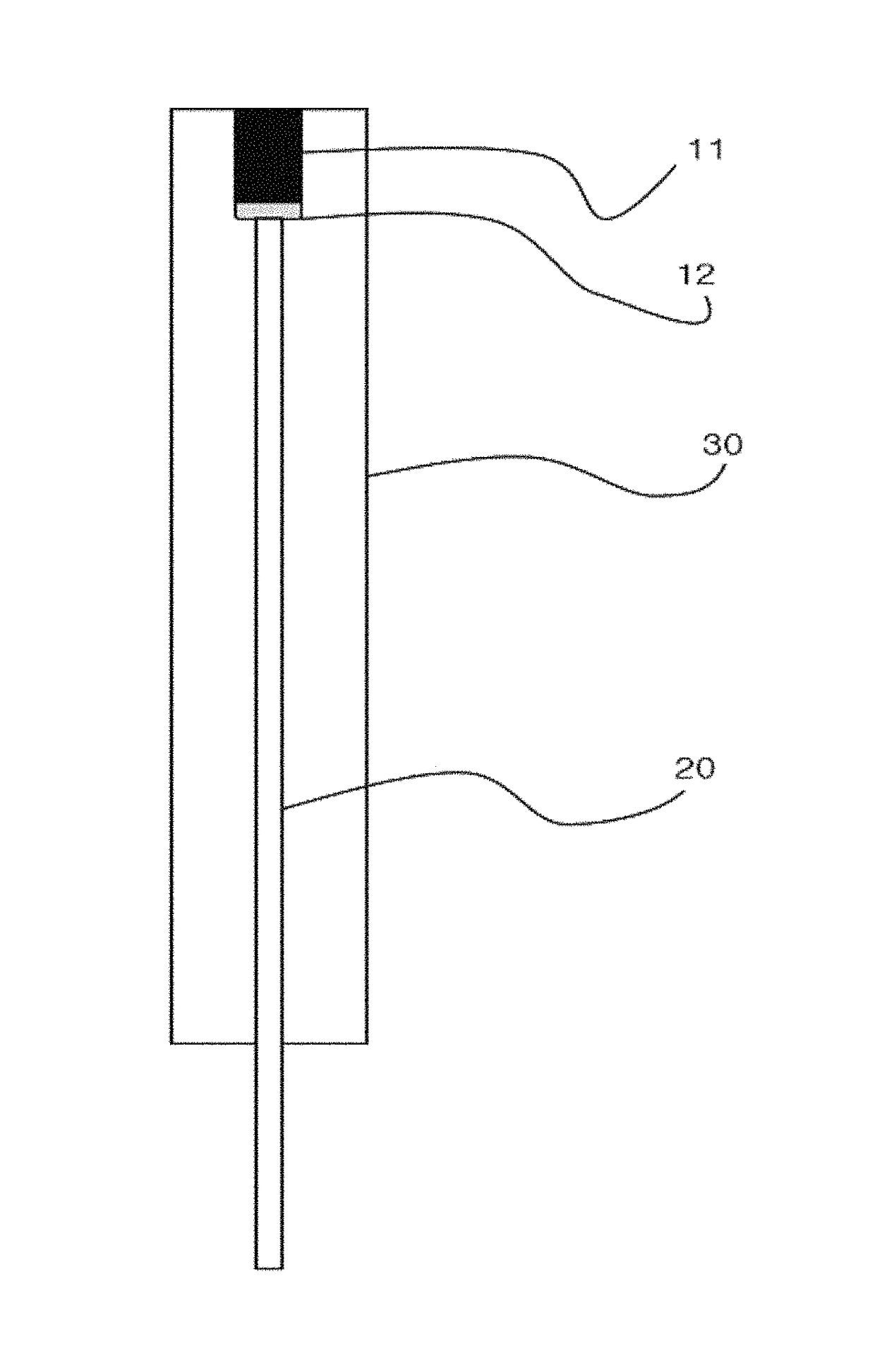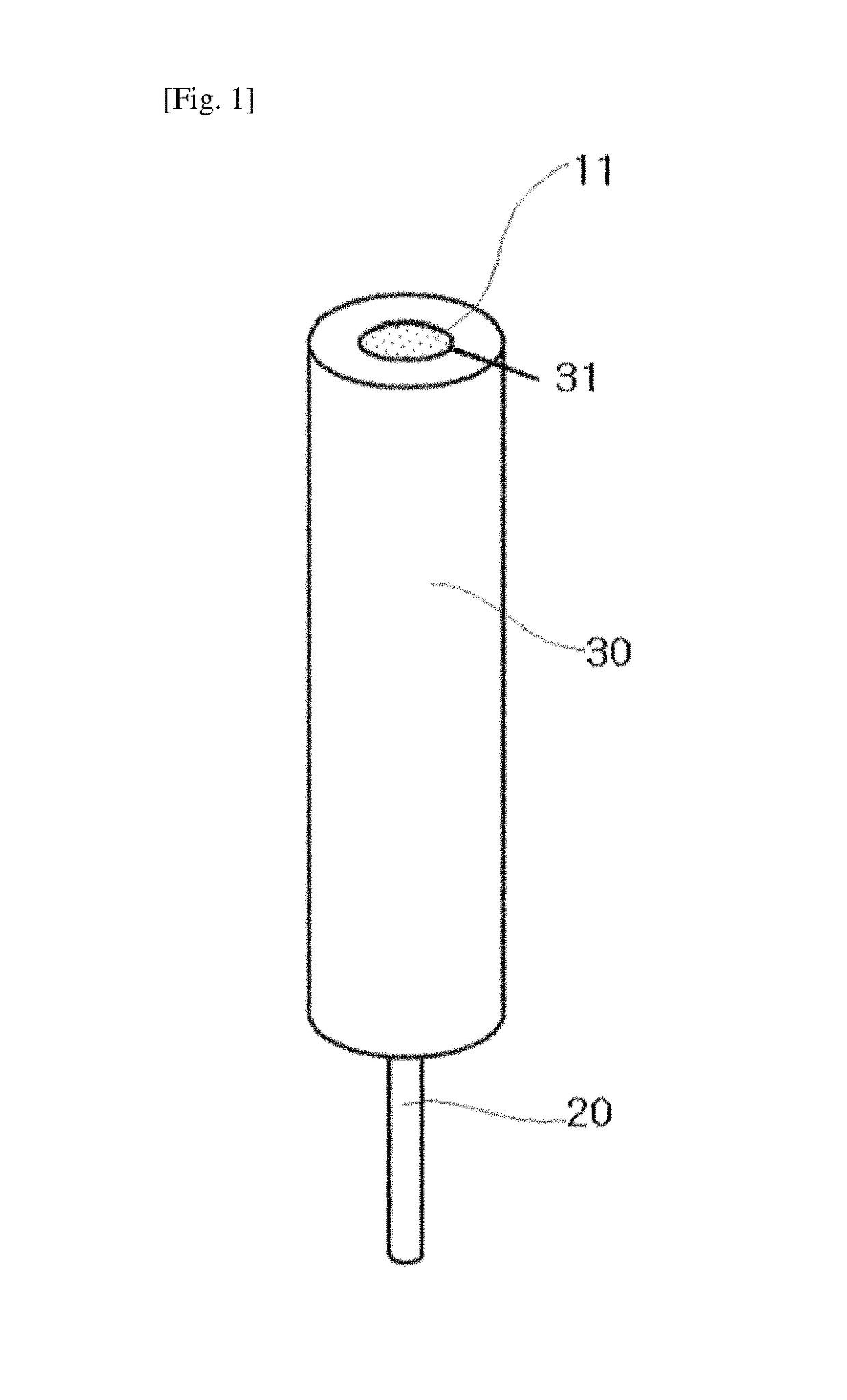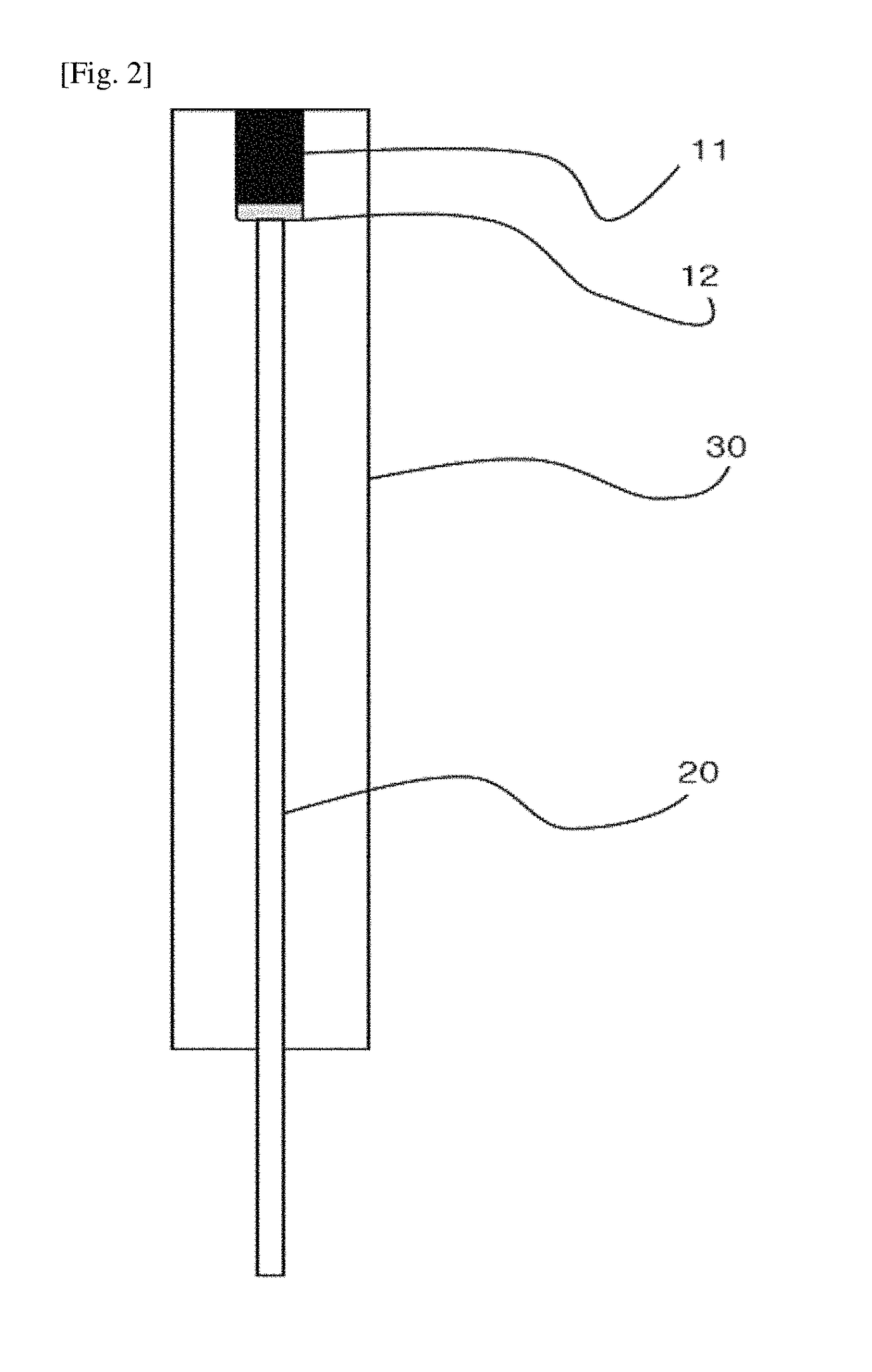Hydrogen ion electrode composed of composite material of nano iridium oxide and polymer resin and enabling surface regeneration, pH sensor using same, and method for manufacturing same
a technology of iridium oxide and nano iridium oxide, which is applied in the field of hydrogen ion electrodes, can solve the problems of severe fouling on the surface of the sensor, difficult activation, and fragile electrodes, and achieves fast and near-theoretical ph sensitivity, high reproducibility, and high physical strength
- Summary
- Abstract
- Description
- Claims
- Application Information
AI Technical Summary
Benefits of technology
Problems solved by technology
Method used
Image
Examples
example 1
Example for Preparing Nano Iridium Oxide
[0093]First, 2 g of (NH4)2IrCl6 was added to a 500 ml round-bottom flask, 250 ml of deionized water was added to dissolve the (NH4)2IrCl6, and then 0.1M NaOH was slowly added while stirring the resultant solution well with a magnetic stirrer to adjust pH to 8 to 9.
[0094]The round-bottom flask was equipped with a condenser, and the solution was shaken well and heated in a water bath at 95° C. for 30 minutes, and then cooled to room temperature.
[0095]The solution was changed into a solution containing suspended precipitate which had turned dark blue from brown. While the pH was measured again, 0.1M NaOH was added to adjust the pH to 8 to 9, and the solution was heated at 95° C. for 30 minutes and cooled to room temperature.
[0096]This procedure was repeated 6 to 7 times, the pH of the solution was fixed at 8 to 9, and 1 to 10 nm-sized nano iridium oxide particles and / or aggregates thereof formed in the solution were collected, washed and then res...
experimental example
Confirmation of Sensitivity of Electrode
[0111]A sensitivity of the hydrogen ion electrode composed of the composite material of nano iridium oxide and a polymer resin (marked as electrode #29: containing 37% nano iridium oxide as measured by thermogravimetric analysis) was measured.
[0112]A commercial pH glass electrode was dipped into an universal buffer solution having a composition of 0.01 M phosphoric acid-boric acid-acetic acid-potassium chloride to adjust a pH of the solution to 3, and the electrode potential versus an Ag / AgCl (3.0 M KCl) reference electrode was measured while the pH was changed in a range of 3 to 11 by adding potassium hydroxide and nitric acid. The result is shown in FIG. 5. Here, the pH is increased to 11, and then repeatedly changed to 3 by adding nitric acid.
[0113]FIG. 5 is a graph showing a potential change according to the pH change of a hydrogen ion electrode composed of a composite material of nano iridium oxide and a polymer resin in an example of the...
PUM
| Property | Measurement | Unit |
|---|---|---|
| size | aaaaa | aaaaa |
| Tg | aaaaa | aaaaa |
| glass transition temperature | aaaaa | aaaaa |
Abstract
Description
Claims
Application Information
 Login to View More
Login to View More - R&D
- Intellectual Property
- Life Sciences
- Materials
- Tech Scout
- Unparalleled Data Quality
- Higher Quality Content
- 60% Fewer Hallucinations
Browse by: Latest US Patents, China's latest patents, Technical Efficacy Thesaurus, Application Domain, Technology Topic, Popular Technical Reports.
© 2025 PatSnap. All rights reserved.Legal|Privacy policy|Modern Slavery Act Transparency Statement|Sitemap|About US| Contact US: help@patsnap.com



